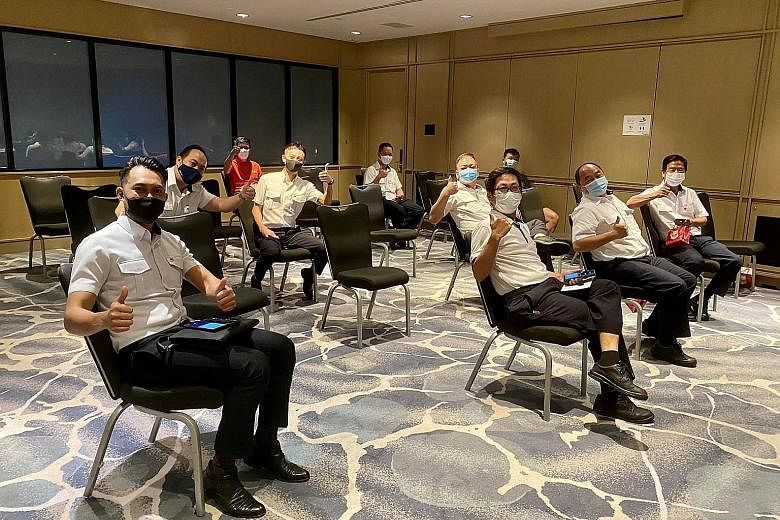The national digital check-in system SafeEntry will be extended to the maritime sector in Singapore later this week.
A new SafeEntry@Sea platform will be introduced at piers, such as Marina South Pier and West Coast Pier, to facilitate contact tracing of workers who regularly travel out to board and work on ships in Singapore's anchorages, Senior Minister of State for Transport and Foreign Affairs Chee Hong Tat said yesterday.
There were two Covid-19 cases in the sector recently - one is a permanent resident working as a marine surveyor at Lloyd's Register Singapore, and the other is a 55-year-old Singaporean harbour pilot at PSA Marine in West Coast Ferry Road.
Speaking at the Singapore Maritime Foundation's virtual New Year Conversations event, Mr Chee said the Maritime and Port Authority of Singapore (MPA) is leveraging technology to improve the safety of maritime operations here.
"Later this week, we will introduce SafeEntry@Sea at our piers where shore-based personnel boarding vessels will scan a unique QR code to provide information on the ships they are boarding," he said.
"This reinforces the existing safe management measures and facilitates contact tracing of shore-based personnel, who board and work on ships in our anchorages."
The SafeEntry system - which logs key data including name, NRIC number and mobile number when users scan a QR code - was introduced in April last year.
Technological innovation, along with reviewing existing rules and enhancing business models, is part of the transformation needed for the maritime industry to overcome future challenges, said Mr Chee.
These include the disruption of global supply chains, digitalisation changing the way we live and work, and the pursuit of decarbonisation in the sector, he added.
Apart from transformation, Mr Chee said the sector also needs to focus on developing trust and nurturing talent.
"Over the years, the Government, industry and unions have established strong partnerships anchored on trust. This close relationship between our tripartite partners has helped us to weather many storms together," he said.
Mr Chee added that the next important step for the sector is to vaccinate and protect workers, starting with those who have to board vessels, such as seafarers, harbour pilots, marine surveyors and cargo officers. The vaccination drive for the sector began yesterday afternoon at Raffles City Convention Centre.
Mr Chee cited an example of the collaboration between Government and industry, disclosing that both had worked together to create a new inter-modal express cargo solution between Batam and Singapore. The arrangement began this month.
"High-value, time-sensitive cargoes, such as electronic components manufactured in Batam, are first transported by sea to our port, before being trucked to the airport, to be flown to other countries," he said.
The entire shipment process takes a day, and benefits manufacturers and logistics companies in both Batam and Singapore by enabling a quicker and more efficient distribution of cargo.
Mr Chee said Singapore will build on this model to strengthen its position as a regional logistics hub.
In his speech, Mr Chee also noted that global sea trade volumes are recovering after a steep decline early last year when the pandemic broke out, and this has helped Singapore's maritime sector stay resilient.
For example, although container throughput last year registered a slight drop of 0.9 per cent compared with 2019, vessel arrival tonnage increased by 1.7 per cent to a record 2.9 billion gross tonnes.
Singapore also remained the world's top bunkering port, with sales amounting to 49.8 million tonnes, an increase of 5 per cent year on year, said Mr Chee.
During yesterday's event, key officials in the maritime sector took part in a panel discussion on the theme "Building Maritime Singapore's Sustainable Future".
MPA chief executive Quah Ley Hoon, who was part of the three-person panel, said the pandemic saw stakeholders and the authorities work together to implement urgent policies, some crafted in a matter of one to three days.


